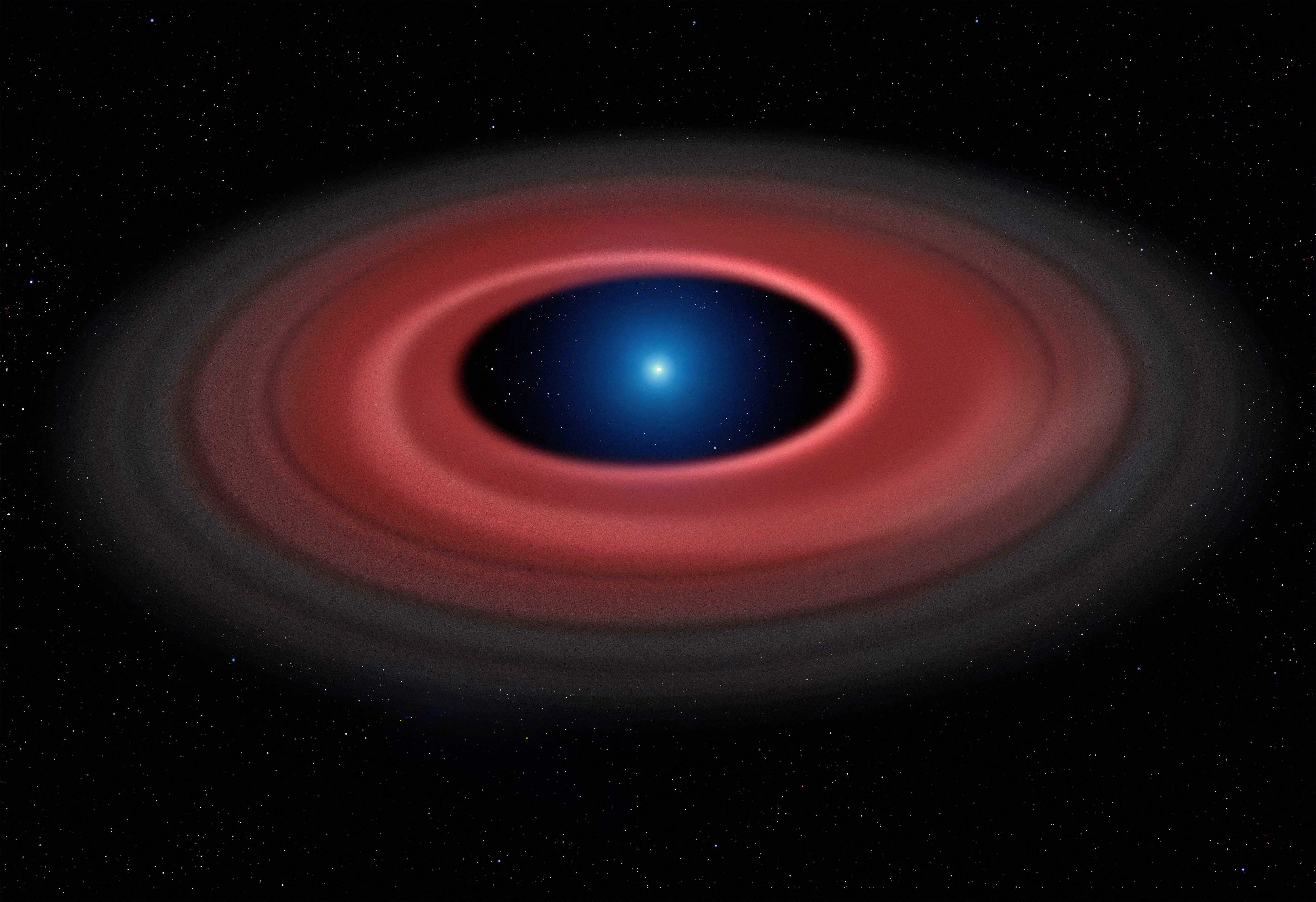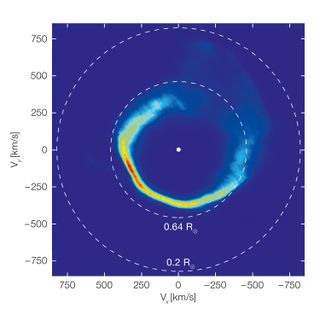'Zombie' Star's Asteroid 'Lunch' Revealed in Close-Up View

A "zombie" star and the remains of its "lunch" are revealed in a new close-up view, 12 years in the making.
When an asteroid wandered too close to an Earth-size white dwarf — the dense core of a star at the end of its life — it was drawn in and destroyed by the star's gravity. Its remains formed a lopsided, glowing gaseous ring around the star — zoom in on the illustrated scenario here.
Researchers have now combined data from the European Southern Observatory's (ESO) Very Large Telescope in Chile and other observatories to paint a 12-year picture of the ring's movement from multiple perspectives. [Animation: White Dwarf Star Collects Planet Debris]
"The image we get from the processed data shows us that these systems are truly disclike, and reveals many structures that we cannot detect in a single snapshot," lead author Christopher Manser, a Ph.D. student at the University of Warwick in England, said in a statement.
Smaller stars near the end of their life balloon out into huge, red giants before running out of fuel. Then, they eject the excess gas, and the tiny, dense core remains as a white dwarf. The process disrupts and destroys planets and asteroids orbiting the star, and the white dwarf left behind can smear an object that approaches too close into an orbiting gaseous ring.
Only seven white dwarfs have been found surrounded by such an orbiting disc, ESO officials said in the statement, so the detailed observations of this system are valuable in finding out exactly what happens to those objects that stray too close.
The researchers used a process called Doppler tomography to measure the system in detail — distortions in the measurements of a particular component of the gas revealed its precise velocities.
Get the Space.com Newsletter
Breaking space news, the latest updates on rocket launches, skywatching events and more!

The ring formed around the white dwarf similarly to the way Saturn's rings formed, although the two systems are very different — the white dwarf is more than seven times smaller than Saturn, but its mass is 2,500 times greater, and the ring is much farther out, ESO officials said. (Saturn and its rings could fit in the gap between the white dwarf and its ring, the officials said.)
Someday, the sun will go through the same process of growing to be a red giant and then dwindling to a white dwarf, so learning more about how orbiting objects fare could reveal more about our solar system's ultimate fate.
"When we discovered this debris disc orbiting the white dwarf back in 2006, we could not have imagined the exquisite details that are now visible in this image, constructed from 12 years of data — it was definitely worth the wait," Boris Gänsicke, a co-author of the study and a physicist at the University of Warwick, said in the statement.
Email Sarah Lewin at slewin@space.com or follow her @SarahExplains. Follow us @Spacedotcom, Facebook and Google+. Original article on Space.com.
Join our Space Forums to keep talking space on the latest missions, night sky and more! And if you have a news tip, correction or comment, let us know at: community@space.com.

Sarah Lewin started writing for Space.com in June of 2015 as a Staff Writer and became Associate Editor in 2019 . Her work has been featured by Scientific American, IEEE Spectrum, Quanta Magazine, Wired, The Scientist, Science Friday and WGBH's Inside NOVA. Sarah has an MA from NYU's Science, Health and Environmental Reporting Program and an AB in mathematics from Brown University. When not writing, reading or thinking about space, Sarah enjoys musical theatre and mathematical papercraft. She is currently Assistant News Editor at Scientific American. You can follow her on Twitter @SarahExplains.